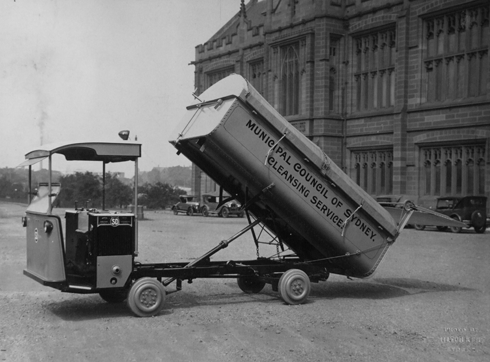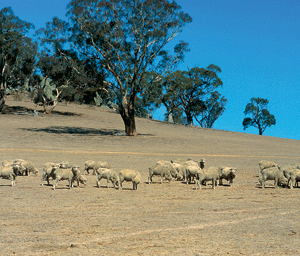
|
Published: 21 November 2011
From electric trucks to first carbon-neutral Australian city
The City of Sydney has become the first council in Australia to achieve formal certification as carbon-neutral. At the same time, the council has announced a tender for up to 12 new electric car charging stations to be installed across Sydney next year.

|
|
A municipal electric garbage truck circa 1930: the City of Sydney will be installing charging stations for a new generation of electric vehicles. Credit:
City of Sydney Archives
|
‘This carbon-neutral certification demonstrates the City of Sydney’s commitment to sustainability and tackling climate change and is part of a set of ambitious sustainability goals that the City has adopted,’ commented Greg Combet, the Federal Government’s Climate Change and Energy Efficiency Minister.
The City’s carbon neutral status was officially confirmed under the new National Carbon Offset Standard, introduced by the Australian Government in July last year.
The City has reduced and offset its carbon emissions by 210 000 tonnes since 2008, when it unofficially achieved carbon neutrality (zero net emissions). According to the Federal government’s Green Vehicle Guide this reduction is the equivalent of taking 70 000 cars off the road for a year.
Carbon emissions by the City’s vehicles, the coal-fired electricity it uses and other emissions sources are reduced by actions such as improving energy efficiency and installing solar panels. Remaining emissions are offset by buying carbon pollution credits from projects such as wind farms.
‘We are on track to reach one of the most ambitious emissions reduction targets of any Australian government – 70 per cent by 2030 from 2006 levels,’ said Lord Mayor Clover Moore MP.
She added that Australian capital cities are responsible for nearly a quarter of the nation’s greenhouse gas emissions. If they were to adopt similar programs to the City of Sydney, she said, they could contribute 40 per cent to the national 5 per cent reduction target.
The City plans to cut more emissions with the rollout of energy efficient LED street lighting, a $12 million solar panel project and installation of a low-carbon trigeneration energy network to produce electricity, heating and cooling for buildings.
The new electric car charging stations planned for 2012 will be located in the Kings Cross parking station, Goulburn Street parking station and two street level carparks on Cope Street in Redfern and Wilson Street Newtown.
Electricity supply to the charge stations will be certified 100 per cent renewable energy from solar, wind or hydro.
Australia’s first public electric vehicle charging station was installed in Derby Place, Glebe last year. It charges a plug-in Prius operated by GoGet car share, and is used by more than 500 residents and businesses in Glebe.
Ms Moore says the council’s connection with electric garbage trucks and vehicles dates back to the early 1900’s.
‘What is old is new again and it’s better for the environment,’ she said.
Source: City of Sydney



